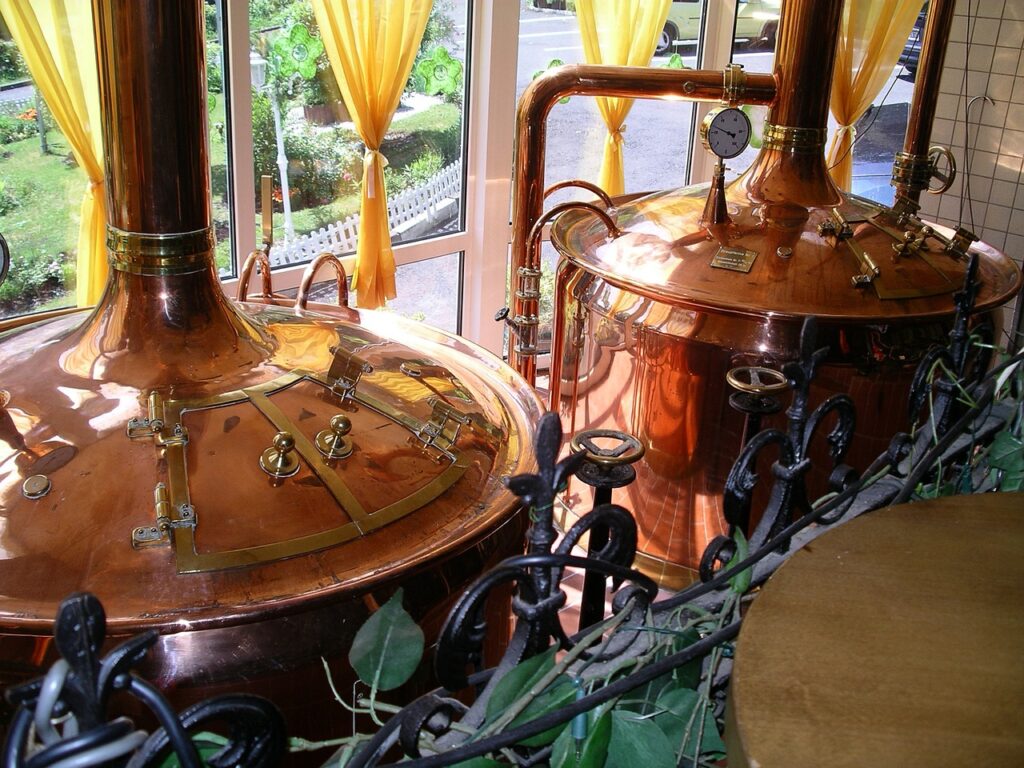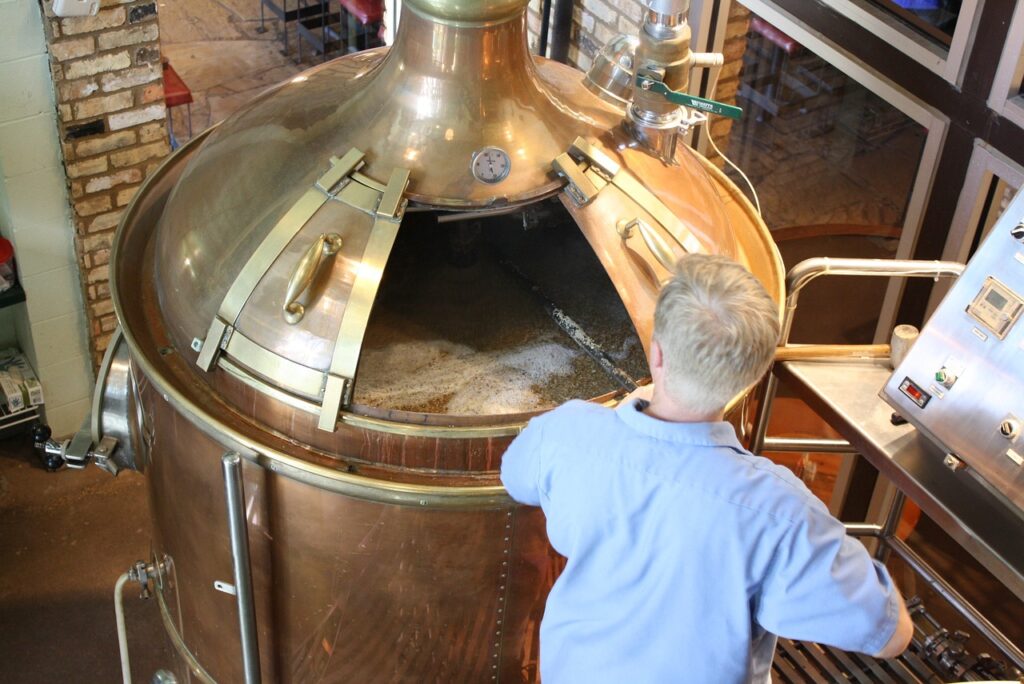
Colorado is a top – maybe even the top – state for craft beer production. With an incredible 400+ breweries operating within the state and home to the mighty Coors brand, Colorado has been synonymous with beer since 1859.
And hops production is also on the rise, with many farmers growing or increasing their hops yields to keep up with the growing demand for locally produced crops.
However, beer production in Colorado does face some challenges. The key issue is the steady rise in operational costs. After all, craft and micro-breweries are small businesses that can’t absorb production cost increases as easily as large multinational brewing companies can.
Craft beer is already more expensive than commercial brands and small breweries can only pass on so much of the increased costs before consumers reject it.
Going solar can help address this problem. Brewing beer requires a lot of electricity, so if you can get it for free from the sun instead of purchasing it from the grid, it’ll save you – and your brewery – a significant amount.
Here’s everything you should know.
In a Nutshell
- Solar power can reduce your energy bills by up to 96% and reduce operations costs by around 30%.
- Colorado’s abundant sunshine will give you consistent solar-generated power and increased business resilience.
- Energy costs will continue to rise. Solar will ensure your bills stay manageable.
- Solar energy will allow you to become a sustainable brand, which is brilliant for your market image.
The Benefits of Solar for Craft Beer
Reduced Operational Costs

First, let’s cover the biggie. A correctly sized solar energy system has the capacity to reduce energy bills by up to 96%! And, according to a study by the Solar Energy Industries Association, a brewery can reduce its operational costs by 30% by switching to solar power.
The Brewers Association sustainability manual states that it costs between 12 – 22 kWh per barrel of beer produced.
- Microbreweries can produce up to 15,000 barrels of beer annually
- Craft breweries can produce from 15,000 – 6 million barrels of beer annually
A microbrewery operating at capacity will consume between 180,000 and 330,000 kWh of electricity annually, while a craft brewery producing 100,000 barrels annually will consume between 1,200,000 – 2,200,000 kWh annually.
You don’t even want to know the figure for a craft brewery operating a maximum quantity!
In monetary terms, let’s take the December 2023 kWh average for Colorado’s commercial electricity rates, which was 9.39¢.
- Our microbrewery example would cost between $16,902 – $30,987 each year in electricity;
- Our 100,000-barrel craft brewery would cost between $112,680 – $206,580 each year in electricity.
Bear in mind that these costs are just for beer production and don’t factor in other power consumption needs like bottling and canning.
Now, let’s see how much these energy bills will be with a 96% reduction:
| Brewery type | Production rate | Annual electricity consumption | Annual electricity cost | Annual electricity cost after a 96% reduction |
| Micro | 15,000 barrels | 180,000 – 330,000 kWh | $16,902 – $30,987 | $676.08 – $1,239.48 |
| Craft | 100,000 barrels | 1,200,000 – 2,200,000 kWh | $112,680 – $206,580 | $4,507.20 – $8,263.20 |
Pretty incredible, right?
Let’s also highlight that solar panels have incredible longevity. Good-quality solar panels will have a warranty for at least 25 years. However, most panels last well beyond that, reaching a 30 or even 40-year lifespan.
While they do drop slightly in efficiency over time, it’s only by a couple of percent, so you can continue enjoying greatly reduced energy bills for years to come.
Increased Business Resilience

Business resilience is crucial if you want to weather all storms. Economic resilience will help you stay afloat in difficult conditions, and energy resilience will keep your business running even when the power isn’t.
Refrigeration is a large part of keeping the finished product at the optimum temperature, but so is using the boilers to heat and boil wort during production.
If you lose power, do you have the backup systems required to keep everything running? If so, for how long? If you don’t have backup systems, how long before your beer and production ingredients spoil?
Even a short power outage can have devastating consequences on a business. But the thing is, you can’t rely on the grid to always deliver consistent power.
Colorado’s grid is already suffering from massive strain due to the hotter summers, increased population, and crumbling infrastructure. Blackouts are going to become increasingly common in the future.
On the other hand, solar energy will help you avoid this issue:
- Colorado has bountiful sunshine, which means your solar panels can operate to maximum efficiency most of the time and deliver a consistent energy supply.
- Solar power is immune to grid-based blackouts.
- You can store excess solar-generated electricity in solar batteries for use when the panels aren’t producing power (during dark hours).
- If well maintained, a solar system will rarely break down.
If you like the sound of round-the-clock power (which costs next to nothing) and the additional resilience it provides to your craft beer production, then you’re going to love solar energy!
Protection From Energy Cost Increases

Despite the growing problems with the grid, energy bills are set to keep rising.
If you are a customer of Xcel, you will have noticed your bill increasing by over 6% in April 2023, and by another 4.4% in September 2023, and Xcel wants to raise prices even further!
We analyzed energy cost increases and found that Colorado’s have been rising on average by 2.6% annually.
Let’s take a look at a couple of examples:
- A $45,000/year energy bill in 2023 will cost over $54,000 in 2033 and over $70,000 in 2040
- A $97,000/year energy bill in 2023 will cost over $116,000 in 2033 and over $150,000 in 2040
With a grid-tied solar system, your energy costs will still increase, but given solar energy’s ability to reduce power bills by over 90%, it will be much easier for your business to absorb the increased amounts over time.
Furthermore, by investing in solar batteries and achieving total independence from grid-based power, you will be 100% energy-independent and resilient, no matter how much Xcel and other utilities decide to charge for their energy.
Brilliant Brand Messaging

Craft beer is a saturated market. In addition to the 400 breweries operating in Colorado, in 2022, there was a total of 9,552 breweries operating across the whole of the United States.
This included:
- 2,035 microbreweries
- 3,418 brewpubs
- 3,838 taproom breweries
- 261 regional craft breweries
With so much competition, it is becoming increasingly difficult to stand out from the crowd and differentiate as something special or different.
Solar energy can help with that!
Consumers are looking for sustainable products and they are willing to pay a premium for them.
The findings of a Statista report concluded that over 40% of US consumers were happy to pay more for a sustainable product. Another study commissioned by Smartest Energy found that 81% of people prefer to purchase from sustainable sellers. That’s huge!
If you can proudly state that your beer comes from 100% solar energy, you have a brilliant – and desirable – brand message.
Case Study: New Belgium Brewing

If you want more proof of how solar can benefit craft beer brewing, you only have to look within the state of Colorado.
New Belgium Brewing, based in Fort Collins, has been investing in solar energy since 2010 when it installed a 200 kW rooftop solar system. The solar panels installed on the premises have since expanded and now have the capacity to generate enough electricity to power the brewery’s canning and bottling lines.
It has also recently installed a massive 446 kW system on its premises in Asheville, NC, which is capable of generating 620,000 kWh of electricity annually.
Along with other sustainable energy measures, the brewery has managed to achieve great things. One of its beers – Fat Tire – has become the first certified carbon-neutral beer in the US and the business is committed to being carbon-neutral by 2030.
8760 Solar for Renewable Energy Solution

If you want to add a splash of sunshine to your beer production, then we want to hear from you!
At 8760 Solar, our expertise lies in supplying smart solar energy systems to Colorado’s farmers and agricultural and rural businesses, and we can help you determine the best type of solar setup for your brewery.
After an initial chat, we can run a thorough analysis of your premises, which will tell us the ideal size, type, and placement for your solar energy solution.
Whether you’re looking to power part of your business or all of it, 8760 Solar can help.
Text “READY” at 719 470-0254 or email us at sales@8760solar.com, and we’ll get back to you right away.
Frequently Asked Questions
Can My Craft Beer Brewery Be Run on Solar Energy?
Yes! Any type of business can benefit from solar energy, and breweries are no exception. With the ability to significantly reduce energy bills and achieve energy independence, solar power will allow your business to become more resilient.
How Much Will My Brewery Operational Costs Decrease After Switching to Solar?
Solar energy can reduce energy bills by up to 96% if the solar system is large enough to accommodate all your business energy consumption. It’s estimated that, overall, solar energy can reduce operational costs by around 30%.
Is Solar Energy for Breweries Worth It?
Solar energy for breweries is definitely worth it. In addition to the huge drop in electricity and operational running costs, solar energy will reduce your brewery’s carbon footprint and give you a glowing brand image.
